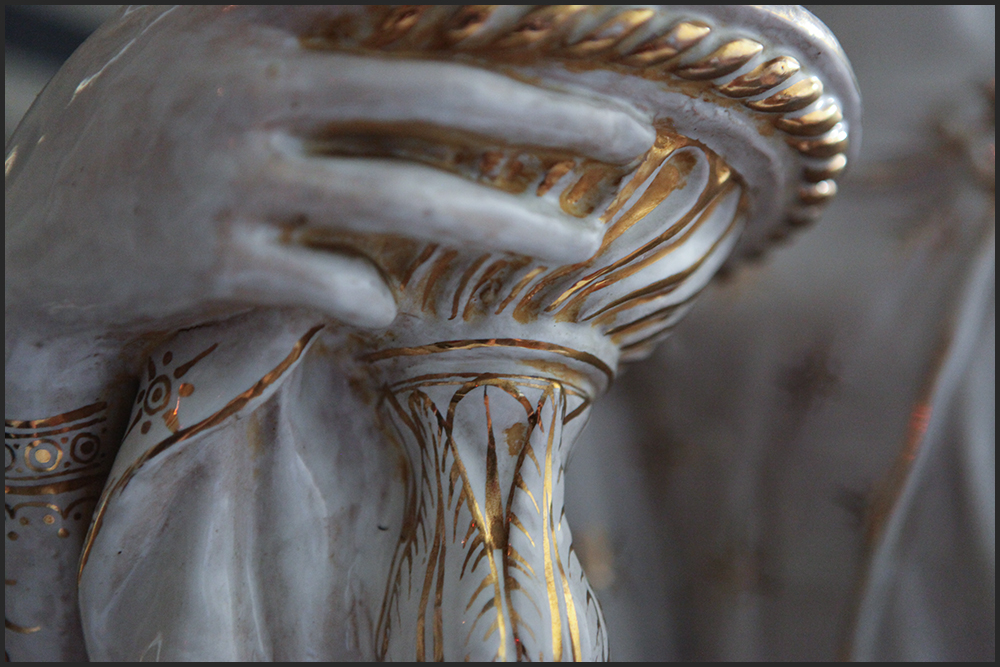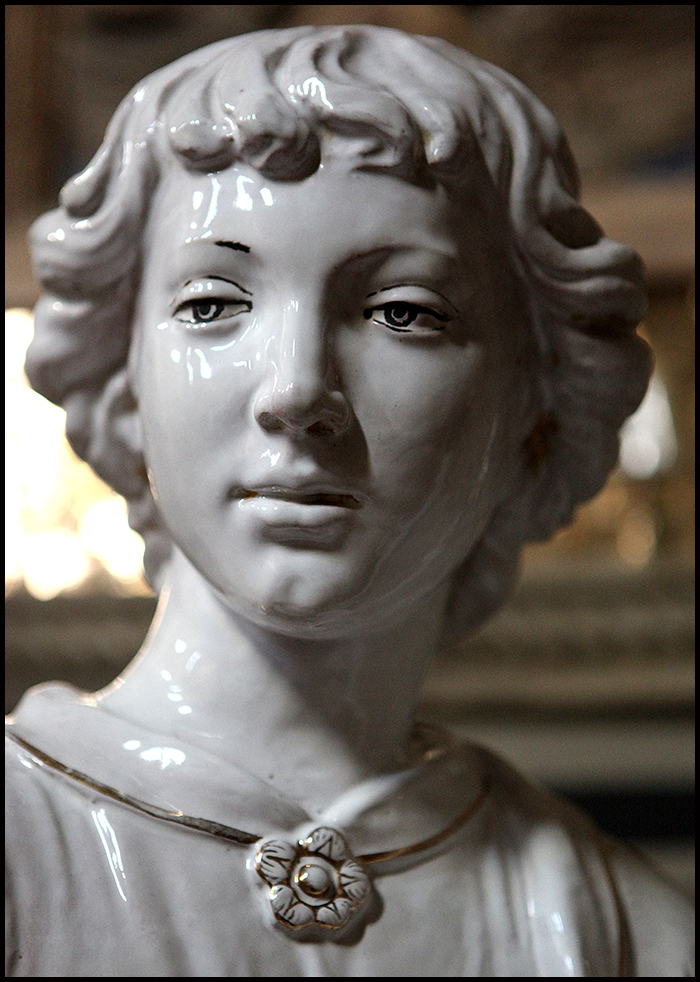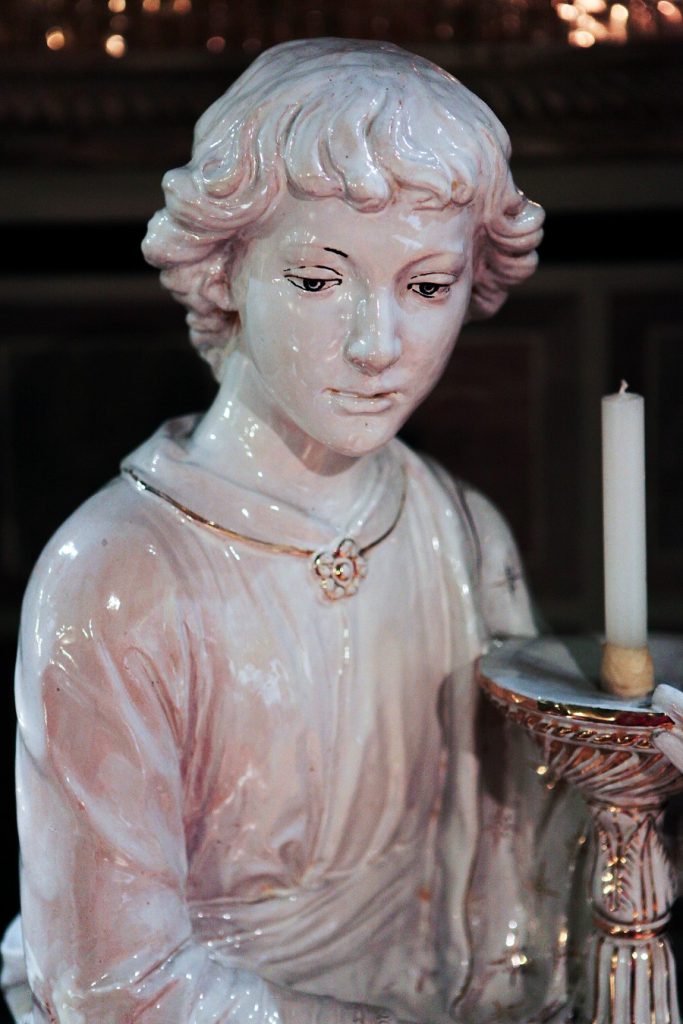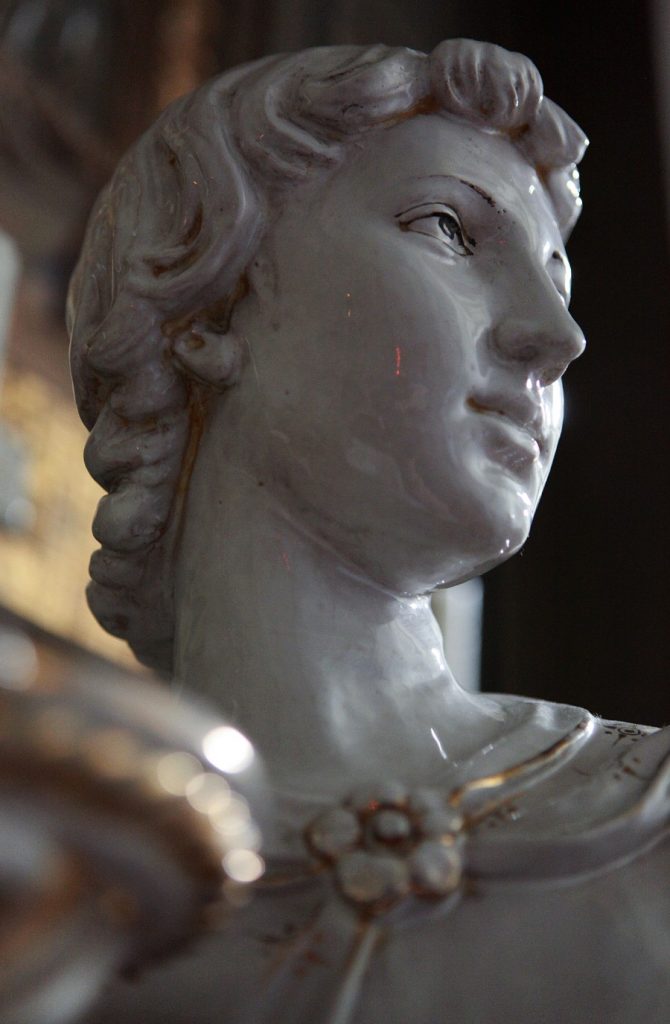
The Confraternity of Mercy of Borgo San Lorenzo, founded in 1847, inaugurated its new headquarters in 1904, designed by the engineer Niccolò Niccolai. The latter was also commissioned to design and direct the construction of a chapel next door, which was soon built and inaugurated on 19 July 1908.

Un disegno progettuale della nuova sede della Misericordia, primo NovecentoFrom an architectural perspective, the oratory reflects the medievalist taste of the time: in the gabled facade built in concrete and fake squared stone, there is a lunette portal surmounted by a spire of hanging ogival arches, a large oculus with polychrome glass and along the contours of the roof a sequence of the same arches. The single nave interior ends with the semicircular apse preceded by a Gothic vault with coffered motifs in the intrados and a concrete altar on each of the two sides. The furnishings and decorative elements were made by the Fornaci (Manufacture) San Lorenzo, the factory that Galileo, Chino, and Pietro Chini had founded in Borgo San Lorenzo two years earlier, following the international successes achieved in the ceramics industry. Galileo painted the apse basin free of charge: it is delimited with geometric bands, the first of which is divided into boxes with quotes in Latin enumerating the seven works of Mercy. Against the background of a sky dotted with stars, and standing among the clouds and with a cherub at her feet, emerges a Madonna with child in a red dress and blue cloak, holding the blessing Jesus in her arms with a pink tunic and a sphere in his left hand. Beyond the references to tradition (e.g. the Byzantine pose and the gentleness of the faces), there are several modernist references (e.g. the cirriform clouds). However, as a comparison, the whole composition certainly does not have the expressive power of the highly-refined Christ Pantocrator, which Galileo completed two years earlier in the parish church of Borgo San Lorenzo. 
Galileo disegnò anche la splendida lunetta in maiolica policroma posta sull’architrave del portale d’ingresso raffigurante un Cristo in pietà.
 Galileo also designed the splendid polychrome majolica lunette, depicting a Christ in pity and placed on the architrave of the entrance portal. Chino’s technical ability and Galileo’s inventiveness are also manifested in glass production: this is evident in the beautiful rose window on the facade, which has a grill in the center (as a symbol of the martyrdom of Saint Lawrence and as a trademark of the Chini Manufacture); this is enclosed by a green garland and by a procession of cherub heads, in turn surrounded by a circle of trefoiled cusps and a band with geometric motifs. Only three of six long ogival windows remain on the right wall because, on the other side, the windows were blocked during the expansion works of the headquarters. Decorated at the edges with rectangles of colored tiles, all windows have a central inscription referring to a work of Mercy, while on the cusp there is the monogram of the Confraternity (a red Latin cross on a blue field with the initials F and M) and below two heraldic representations of benefactor village families. Thanks to numerous donations, in the following years the oratory was enriched with valuable furnishings, still produced by the Chini Manufacture, such as the two painted terracottas, surely inspired by the neo-Renaissance taste (although set in a golden mosaic panel), both bearing two small heads of cherubs and at the base another cherub with large wings.
Galileo also designed the splendid polychrome majolica lunette, depicting a Christ in pity and placed on the architrave of the entrance portal. Chino’s technical ability and Galileo’s inventiveness are also manifested in glass production: this is evident in the beautiful rose window on the facade, which has a grill in the center (as a symbol of the martyrdom of Saint Lawrence and as a trademark of the Chini Manufacture); this is enclosed by a green garland and by a procession of cherub heads, in turn surrounded by a circle of trefoiled cusps and a band with geometric motifs. Only three of six long ogival windows remain on the right wall because, on the other side, the windows were blocked during the expansion works of the headquarters. Decorated at the edges with rectangles of colored tiles, all windows have a central inscription referring to a work of Mercy, while on the cusp there is the monogram of the Confraternity (a red Latin cross on a blue field with the initials F and M) and below two heraldic representations of benefactor village families. Thanks to numerous donations, in the following years the oratory was enriched with valuable furnishings, still produced by the Chini Manufacture, such as the two painted terracottas, surely inspired by the neo-Renaissance taste (although set in a golden mosaic panel), both bearing two small heads of cherubs and at the base another cherub with large wings.


Thus in 1911, a Madonna with Child and Saint John was placed on the right altar, with clear references to Benedetto da Maiano, while two years later the left altar housed a Saint Joseph with Child, which has no counterpart in the traditional iconography.


The monograms of the Mercy (on the right) and those by the Chini Manufacture (on the left) were set on the ogival arches that delimit the altars. They are all enclosed in a garland of leaves and fruit. The wooden entrance hall, with small windows, was designed by Dino Chini and produced by the local Bini carpentry shop in 1916.

The oratory includes a sample collection of the Chini Manufacture’s production: for example, the pillar that supports the white stoup at the entrance, used by Tito Chini to furnish the Salaiole chapel. The manufacture’s catalog also included copies of Della Robbia majolica, such as the two torch-holding Angels, which were already displayed on the two side altars in the 1930s; they are the faithful reproduction of those that Luca Della Robbia made for the Cathedral of Florence, except for the addition of golden stars on the cloak. 












Foto di Umberto Banchi Scheda di Marco Pinelli

